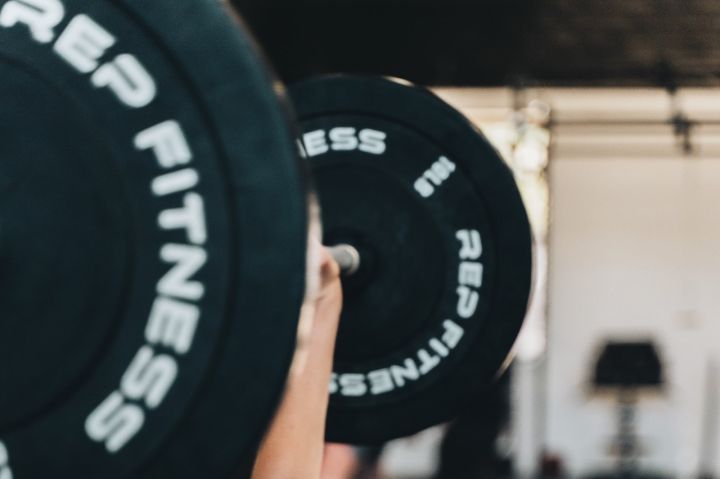barbell squats
80% of you will tell you that squats are the most resistant exercise. This is because, even with the right approach to the squat, it is still more dangerous than other barbell movements.
The squat is effective, but it is the movement that most of you would rather avoid. But when you master the important skills of the deep squat, you'll be surprised at the results, even though it's tiring to practice!

barbell squats
even if a weightlifter squats deeply, you may have problems standing up every time you squat. Turn the problems to your advantage with these tips.
It is important to pay attention to speed and power during the deep squat to give the best feeling. It requires more than pure strength. There are many techniques to deep squatting and it takes a lot of time.

barbell deep squat
the deep squat is an upward strength curve, meaning that it is most difficult at its lowest point and becomes easier when you stand up. If you want to improve your deep squat, you have to strengthen your lowest point strength by pausing the squat and dead spotting the squat, and you have to repeat the exercises.
Tricks! Tricks! And tricks!
If you pay close attention to the masters training the deep squat, you will find that they too follow certain habits. When taking your technique seriously, each repetition of the movement becomes an opportunity to perfect a habit. From the moment you touch the barbell to the moment you put it back in the starting position, try to do the same movement every time.

correct deep squat position
mastering skillful deep squatting technique through constant practice, by skillful technique here I mean efficient neuromuscular movement patterns that not only make deep squats easier to perform but also produce greater explosive power in a shorter period of time.
Concentrate on the squat
the deep squat requires perfect posture to perform the extension and contraction movements correctly, including the centrifugal phase (squatting), the cushion phase (transition from centrifugal to centripetal) and the centripetal phase (standing up).

initiation to end of the deep squat
in reality, during the centrifugal phase, the body stores elastic potential energy and the lowest point movement correctly releases it from the legs and can propel you to stand up.
The reason that deep squatters don't necessarily collapse at the lowest point, but are at a point where they collapse a few centimeters above ground level, is that, while they may not have enough strength in themselves to take the weight of the barbell, they have enough skill to stand up using the elastic potential built up in their legs.

barbell squat
the way to build up maximum stored energy is to focus on the process of squatting. Many of our partners squat lighter deadlifts during the warm-up and different speeds and depths during the formal set of squats. On the other hand, a skilled squatter squats at the same speed and depth every time, regardless of how heavy the barbell is.
Unless the exercise is repeated at the same speed and squatting at the same depth, the pullback reflex cannot be fully utilized. Once one has learned how to capture, build up and release energy, one can then maximize the power during the stand up after squatting.

barbell squat
training explosive strength
having mastered the technique of the deep squat and with the pull reflex working on itself, you can further strengthen the strength located at the lowest point position by training the pause squat.
Just as in a competition, use the squat position that is easiest to fire, with the barbell in the optimal position, and squat down to the depth to be tested. Hold this position for 1-2 seconds, then stand up explosively from the lowest point and return to the starting position.

explosive stand up from lowest point
do not use this type of training in place of regular deep squats as it requires constant practice of basic squatting techniques. But do 2 sets of 3-5 of these exercises after deadlift squats and you will soon have stronger squat strength.
All that's left is how to stand up!
The correct pull reflex can help you break through the lowest point of the deep squat, but there is still a way to complete the squat after the energy is almost depleted.

dead point squat
this is where the dead spot squat comes into play. Place the barbell on the safety bar of the squat rack, stand under the barbell and stand up from this position. This is the dead point squat and instead of doing multiple reps at once, one at a time is sufficient.
The elastic potential energy of the sticking point will gradually disappear and training these squats will help to build strength throughout the squat. In addition, doing dead spot squats on a regular basis strengthens the initiation strength considerably, which also allows you to handle hard pulls with large weights.

dead point squat
the following are guidelines for practicing the dead spot squat.
Perform only 3-6 sets of single repetitions starting 1-3 inches above parallel if possible, use a safety bar and practice in an explosive manner if possible as you refine your technique, increase the use of elastic bands and chains

dead spot squat
finally
when squatting deep, watch your posture and the power will come up from the lowest point. When you are ready to go further, add the pause squat and dead spot squat to your routine so that the power that comes from the lowest point becomes your own.

barbell squat
if you're determined to transform, you need to get your thighs in shape. Add these tips to your squat to applaud a stronger you!

